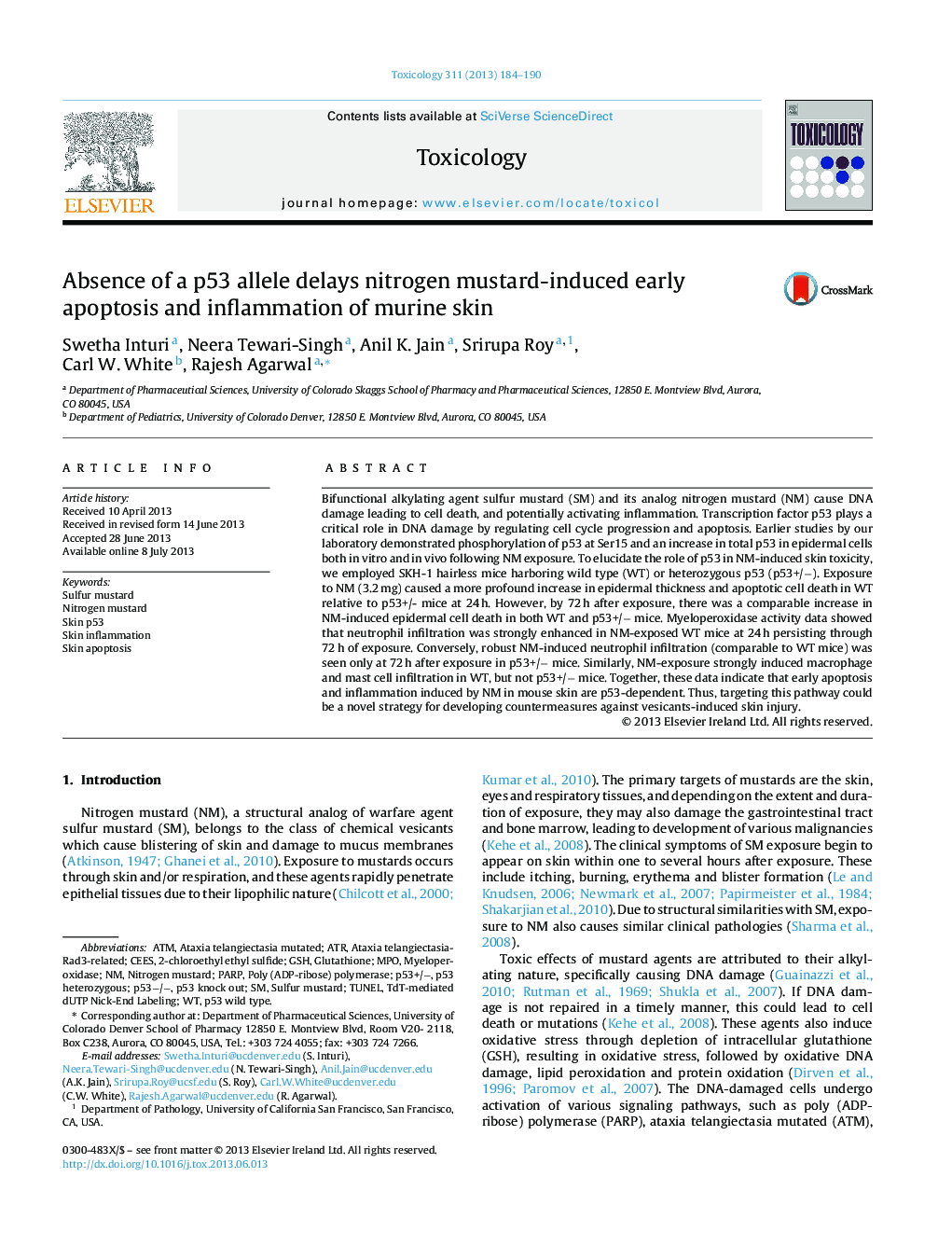| کد مقاله | کد نشریه | سال انتشار | مقاله انگلیسی | نسخه تمام متن |
|---|---|---|---|---|
| 5859247 | 1132459 | 2013 | 7 صفحه PDF | دانلود رایگان |
عنوان انگلیسی مقاله ISI
Absence of a p53 allele delays nitrogen mustard-induced early apoptosis and inflammation of murine skin
دانلود مقاله + سفارش ترجمه
دانلود مقاله ISI انگلیسی
رایگان برای ایرانیان
کلمات کلیدی
ATRGSHPARPCEEs2-Chloroethyl ethyl sulfide - 2-کلروتیل اتیل سولفیدataxia telangiectasia mutated - Ataxia telangiectasia جهش یافته استMPO - DFOSkin inflammation - التهاب پوستTdT-mediated dUTP nick-end labeling - تلگراف نامحدود DUTP تدوین شده توسط TdTTUNEL - تونلNitrogen mustard - خردل نیتروژنATM - خودپردازSulfur mustard - سولفور موستارد یا گاز خردلmyeloperoxidase - میلوپراکسیداز poly (ADP-ribose) polymerase - پلی (ADP-ribose) پلیمرازGlutathione - گلوتاتیون
موضوعات مرتبط
علوم زیستی و بیوفناوری
علوم محیط زیست
بهداشت، سم شناسی و جهش زایی
پیش نمایش صفحه اول مقاله

چکیده انگلیسی
Bifunctional alkylating agent sulfur mustard (SM) and its analog nitrogen mustard (NM) cause DNA damage leading to cell death, and potentially activating inflammation. Transcription factor p53 plays a critical role in DNA damage by regulating cell cycle progression and apoptosis. Earlier studies by our laboratory demonstrated phosphorylation of p53 at Ser15 and an increase in total p53 in epidermal cells both in vitro and in vivo following NM exposure. To elucidate the role of p53 in NM-induced skin toxicity, we employed SKH-1 hairless mice harboring wild type (WT) or heterozygous p53 (p53+/â). Exposure to NM (3.2Â mg) caused a more profound increase in epidermal thickness and apoptotic cell death in WT relative to p53+/- mice at 24Â h. However, by 72Â h after exposure, there was a comparable increase in NM-induced epidermal cell death in both WT and p53+/â mice. Myeloperoxidase activity data showed that neutrophil infiltration was strongly enhanced in NM-exposed WT mice at 24Â h persisting through 72Â h of exposure. Conversely, robust NM-induced neutrophil infiltration (comparable to WT mice) was seen only at 72Â h after exposure in p53+/â mice. Similarly, NM-exposure strongly induced macrophage and mast cell infiltration in WT, but not p53+/â mice. Together, these data indicate that early apoptosis and inflammation induced by NM in mouse skin are p53-dependent. Thus, targeting this pathway could be a novel strategy for developing countermeasures against vesicants-induced skin injury.
ناشر
Database: Elsevier - ScienceDirect (ساینس دایرکت)
Journal: Toxicology - Volume 311, Issue 3, 15 September 2013, Pages 184-190
Journal: Toxicology - Volume 311, Issue 3, 15 September 2013, Pages 184-190
نویسندگان
Swetha Inturi, Neera Tewari-Singh, Anil K. Jain, Srirupa Roy, Carl W. White, Rajesh Agarwal,